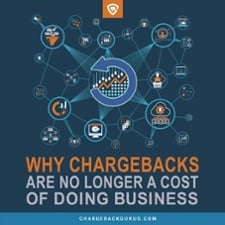Css Profile Error: ((0)) Invalid Transaction Type(12) Please Try Again.
A credit carte being declined is never a fun experience. Many customers feel both a sense of frustration at the filibuster in making their buy and a sense of embarrassment, worrying that anyone effectually might presume they're someone who spends coin recklessly. Merchants know, nevertheless, that there are a wide multifariousness of possible reasons for a credit card being declined. Some of these reasons tin can exist resolved chop-chop and hands, while others require the merchant to ask for another method of payment or even accept some other action requested by the issuer. In club to respond properly to a declined credit card and salvage those transactions that can be salvaged, merchants need to be familiar with the decline codes they might receive and what those codes mean. Permit's talk near the about common decline codes and how merchants should respond when they receive them. A decline message doesn't hateful the transaction is a loss. Even if the customer doesn't have an alternate payment method, many decline codes bespeak errors or inconsistencies that can be corrected. If this can be done, the merchant can continue attempting the transaction until the reasons for the refuse are addressed and the transaction goes through. Withal, merchants need to be careful about getting the proper authorization and re-running transactions correctly, or else they could finish upwardly liable for authorization-related chargebacks down the line. A credit card refuse code is a 2-digit alphanumeric code that indicates the reason why a credit menu transaction was declined. These codes provide additional data for merchants that lets them know whether or not the transaction should be reattempted. Many entities are involved in processing a credit card transaction. It starts with the merchant and the customer, only before any coin really changes hands, it will get through a payment processor, gateway, and the customer's issuing depository financial institution. If whatever of these parties detects a problem with the transaction, they may reject it. If this happens, they will send dorsum a decline lawmaking that specifies the reason why the transaction could not exist processed. Decline codes aren't completely uniform across all networks, simply after a major effort in recent years to standardize these codes across the industry, there's at present a standardized list of codes covering nearly situations. Merchants will rarely encounter a network-specific decline code, merely if they do, they'll need to reference that network's list of response codes in order to understand what it means. The listing of credit carte du jour decline codes is long—even longer if you were to include all those specific to one network or issuer—but some codes are more mutual than others. Codes 51 (bereft funds) and 05 (do not honour) are specially common. Here'southward a rundown of the most mutual reject codes: Obviously, you wouldn't desire to keep trying to run a card that had been reported lost or stolen, only it'southward not unheard of to mistype a CVV number or expiration date. Yous can attempt to correct errors and attempt a transaction a second time when you sympathise which transactions are safe to retry and which should not be attempted again. The key is knowing the departure between hard and soft declines. A soft decline is one that indicates the transaction can be reattempted. The second effort may exist approved if the trouble that caused the first decline has been fixed. A hard decline is final. Transactions that receive hard declines should never exist reattempted. Ambitious anti-fraud tools at the processor level tin sometimes cause soft declines. Your processor will take rules and guidelines for retrying soft-declined transactions. Review the data they accept provided y'all and be specially careful virtually allowing automated retries. In a menu-non-nowadays surround, your system should ideally be prepare to cake repeated attempts at a transaction that has returned a hard refuse code. Merchants should never attempt to "brute force" a transaction without proper dominance, equally these can effect in chargebacks that they will be unable to fight. When you lot do work with a customer to get effectually a soft refuse and obtain authorization for a transaction, make sure you carefully document the actions yous took and retain that data as evidence in case they ever decide to dispute information technology. Good tape-keeping tin be crucial to successfully fighting a chargeback dispute. Merchants may benefit from keeping a reference canvas on hand with a list of turn down codes and instructions for employees on how to handle each. This allows employees to inform customers why their card has been declined and prevents whatever mix-ups involving retrying or non retrying a transaction. Having consistent policies for handling various decline codes tin assistance process any transactions that can exist processed and prevent potency-related chargebacks. Nobody likes getting a pass up code—not the customer, and certainly not the merchant—but they serve an important purpose by preventing problematic transactions from going through and alerting you lot to the issues that need to exist resolved. When merchants empathise the decline codes their processor returns, they tin can human activity quickly and decisively to recover sales past correcting transaction errors and offer alternative payment methods Code 51 typically indicates that there are insufficient funds in the cardholder's account to procedure the transaction. This should be handled by requesting that the customer apply an alternate method of payment, if available. Code usually means "Practice not award." Unfortunately, information technology'southward i of the less specific turn down codes. It could mean that the billing address entered doesn't match, or that some other reddish flag has been triggered. Code 91 typically indicates that a network communication error has occurred. It's typically safe to merely retry the transaction. Codes 85 and 00 can also indicate communication errors. Thanks for following the Chargeback Gurus blog. Feel free to submit topic suggestions, questions or requests for advice to: win@chargebackgurus.com Tabular array of Contents
 Virtually refuse codes are sent early in the transaction procedure, when the merchant first attempts to obtain authorization to run the carte du jour.
Virtually refuse codes are sent early in the transaction procedure, when the merchant first attempts to obtain authorization to run the carte du jour. What Are Credit Carte du jour Decline Codes?
List of Credit Card Decline Codes
Pass up Lawmaking Meaning 01 Refer to issuer 02 Refer to issuer (special condition) 03 Invalid merchant 04 Pick up bill of fare (No fraud) 05 Do not honor 06 Fault 07 Pick upward card (fraud) 10 Partial approving 12 Invalid transaction 13 Invalid corporeality fourteen Invalid account number 15 No such issuer 19 Re-enter transaction 21 No activity taken 25 Unable to locate tape in file 28 File temporarily not available for update or injury 41 Lost carte, selection up 43 Stolen menu, choice up 51 Insufficient funds 52 No checking business relationship 53 No savings account 54 Expired carte du jour 55 Incorrect PIN 57 Transaction not permitted - card 58 Transaction non permitted - terminal 59 Suspected fraud 61 Exceeds approval corporeality limit 62 Invalid/restricted service code 63 Security violation 64 Transaction does not fulfill AML requirement 65 Exceeds withdrawal limit 70 PIN information required 75 Allowable number of PIN entry tries exceeded 76 Unsolicited reversal 78 Blocked, first utilise 79 Already reversed 82 Negative CAM, dCVV, iCVV, or CVV results 85 No reason to turn down 86 Cannot verify PIN 91 Issuer or switch unavailable 92 Unable to road transaction 93 Transaction can't exist completed - violation of police force 96 System error 97 Invalid CVV 1A Additional customer hallmark required R0 Recurring charge stopped at customer asking R1 Recurring charge stopped at client request
What Are the Well-nigh Mutual Decline Codes?
What's the Difference Between a Hard Decline and a Soft Decline?
 The best way to recover sales in the case of hard declines is to offer the customer alternate payment methods. You tin can besides offer to concord an item in reserve if they need to contact their banking concern to resolve a security flag or go their limit increased.
The best way to recover sales in the case of hard declines is to offer the customer alternate payment methods. You tin can besides offer to concord an item in reserve if they need to contact their banking concern to resolve a security flag or go their limit increased.
FAQ
What Does Decline Code 51 Mean?
What Does Refuse Code 05 Mean?
What Does Turn down Code 91 Mean?

Similar Posts
Source: https://www.chargebackgurus.com/blog/credit-card-decline-codes
Post a Comment for "Css Profile Error: ((0)) Invalid Transaction Type(12) Please Try Again."